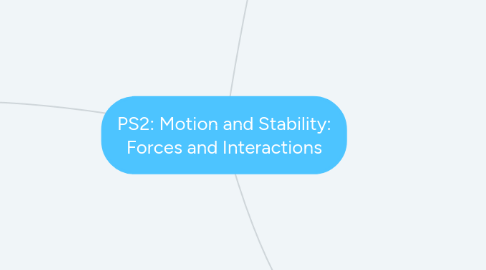
1. PS2.C: STABILITY AND INSTABILITY IN PHYSICAL SYSTEMS
1.1. Why are some physical systems more stable than others
1.1.1. Events and processes in a system typically involve multiple interactions occurring simultaneously or in sequence
1.1.2. system’s stability or instability and its rate of evolution depend on the balance or imbalance among these multiple effects
1.1.2.1. Stable System
1.1.2.1.1. internal and external forces are such that any small change results in forces that return the system to its prior state
1.1.2.1.2. A system can be changing but have a stable repeating cycle of changes, with regular patterns of change that allow predictions about the system’s future
1.1.2.1.3. stable system can appear to be unchanging when flows or processes within it are going on at opposite but equal rates
1.1.2.1.4. stable systems may appear static or dynamic
1.1.2.2. Unstable System
1.1.2.2.1. can be static but unstable, with any small change leading to forces that tend to increase that change
1.1.3. Stability and instability in any system depend on the balance of competing effects
1.1.3.1. A steady state of a complex system can be maintained through a set of feedback mechanisms, but changes in conditions can move the system out of its range of stability
1.1.3.1.1. With no energy inputs, a system starting out in an unstable state will continue to change until it reaches a stable configuration
2. PS2.A: FORCES AND MOTION
2.1. Interactions of an object with another object can be explained and predicted
2.1.1. using the concept of forces
2.1.2. cause a change in motion of one or both of the interacting objects
2.1.2.1. individual force acts on one particular object and is described by its strength and direction
2.1.2.1.1. strengths of forces can be measured and their values compared
2.1.2.2. What happens when a force is applied to an object depends not only on that force but also on all the other forces acting on that object.
2.1.2.2.1. A static object typically has multiple forces acting on it, but they sum to zero
2.1.2.2.2. If the total (vector sum) force on an object is not zero, however, its motion will change
2.1.2.2.3. the motion of an object subject to forces is governed by Newton’s second law of motion
3. PS2.B: TYPES OF INTERACTIONS
3.1. All forces between objects arise from a few types of interactions:
3.1.1. gravity
3.1.1.1. Objects with mass are sources of gravitational fields and are affected by the gravitational fields of all other objects with mass
3.1.1.2. Gravitational forces are always attractive
3.1.1.3. Gravitational forces are always attractive
3.1.1.4. Gravitational force due to Earth, acting on an object near Earth’s surface, pulls that object toward the planet’s center
3.1.1.5. Newton’s law of universal gravitation provides the mathematical model to describe and predict the effects of gravitational forces between distant objects
3.1.2. electromagnetism
3.1.2.1. Electric forces and magnetic forces are different aspects of a single electromagnetic interaction
3.1.2.1.1. forces can be attractive or repulsive, depending on the relative sign of the electric charges involved
3.1.2.2. The forces’ magnitudes depend on the magnitudes of the charges, currents, and magnetic strengths as well as on the distances between the interacting objects
3.1.2.2.1. All objects with electrical charge or magnetization are sources of electric or magnetic fields and can be affected by the electric or magnetic fields of other such objects
3.1.2.2.2. Attraction and repulsion of electric charges at the atomic scale explain
3.1.2.3. Coulomb’s law provides the mathematical model to describe and predict the effects of electrostatic forces
3.1.3. strong and weak nuclear interactions
3.1.3.1. strong and weak nuclear interactions are important inside atomic nuclei
3.1.3.1.1. short-range interactions determine
3.2. Collisions between objects involve forces between them that can change their motion
3.2.1. Any two objects in contact also exert forces on each other that are electromagnetic in origin
3.2.1.1. These forces result from deformations of the objects’ substructures and the electric charges of the particles that form those substructures
3.2.2. Gravitational, electric, and magnetic forces between a pair of objects do not require that they be in contact
